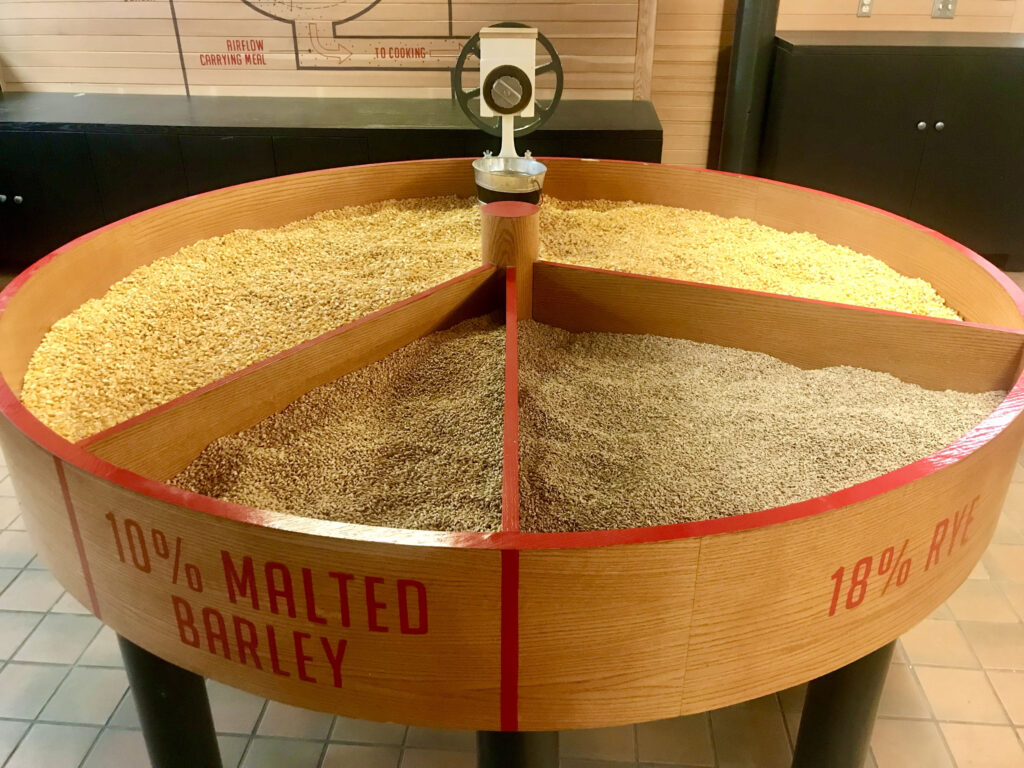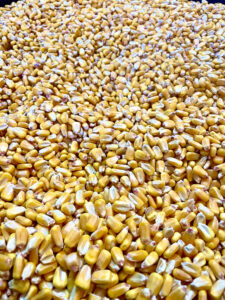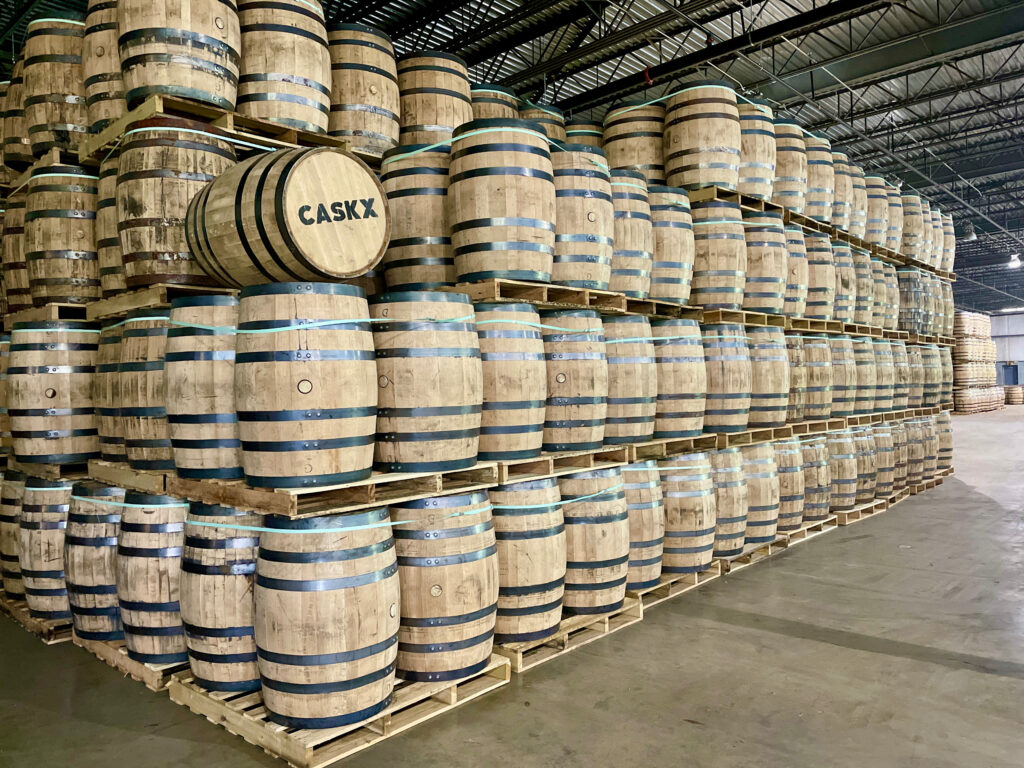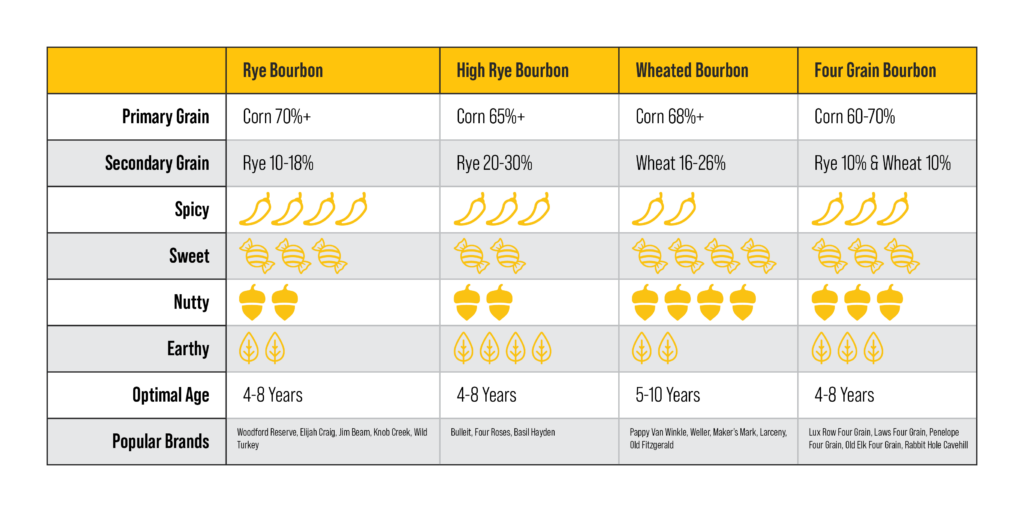
While many bourbon experts stress the importance the barrel has on the flavor of the bourbon, some leave out another significant factor in the way the whiskey tastes: the mash bill. It’s true the new, charred oak barrel is responsible for at least 70% of the taste and 100% of the color, but let’s dive into the nuances of that leftover 30%.
The mash bill is basically the grain recipe the distiller chooses for his bourbon or whiskey. Obviously to be called a bourbon, the mash bill must have at least 51% corn, but how does the distiller choose the other grains, and how does he or she determine the exact percentages to use? The short answer is: Preference.
Do you like your bourbon spicy? Sweet? Rich? Subtle? With a long finish? Easy to sip? Punchy? Whichever flavor notes and mouthfeel you’re after, you can help steer the bourbon in that direction by choosing certain mash bills. But no matter which grains are chosen, every distiller agrees that the grains must be of highest quality.
Pam Heilmann, master distiller emerita of Michter’s, once told me a candid tip to remember when making good bourbon: “Shit in, shit out.” There’s really no gray area in that statement, and that’s why most distilleries invest in expensive equipment to make sure every truckload of corn, rye, wheat and malted barley is up to their standard.
Common Bourbon Mash Bills
Most bourbon mash bills use either rye or wheat as the secondary grain component after the (at least) 51% corn has been selected. Looking at everyday bourbon mash bills, distillers prefer to use much more than 51% corn for the sweetness the grain imparts on the bourbon.

And the third grain is malted barley, which tends to fall around 5-15% of the recipe and is basically added to help produce enzymes needed to convert starch into sugar.
If you want your bourbon to be on the spicy side, you pick rye. If you want it a little smoother around the edges and softer, you pick wheat. Think about a slice of rye bread compared to a slice of wheat. Rye is peppery, more dense and has a bold taste. Wheat, on the other hand, is soft, sweet and spongy.
The majority of bourbons on the shelf today are made with Rye as the secondary grain, and that includes popular brands like Jim Beam, Evan Williams, Woodford Reserve and Blanton’s.
And while there are only a handful of major Wheated bourbon brands, the mash bill is becoming increasingly popular. These major wheated bourbon brands include Pappy Van Winkle, Weller, Maker’s Mark, Larceny and Old Fitzgerald.
Within these common mash bills, there can also be a more detailed description most often when it comes to rye. An emerging category in the whiskey world is a High Rye Bourbon, made with a mash bill of more than 20% rye. Standard rye bourbons usually fall in the 10-18% range, so when a distiller decides to use more than that, it ups the spice and often creates more grassy, earthy notes.
What is Four Grain?
Naturally when you set up parameters, someone always wants to push those boundaries and experiment within the rules. Case in point: Four Grain Bourbon or Whiskey. This unique mash bill uses all four grains we mentioned above: corn, rye, wheat and malted barley. And as long as the recipe is at least 51% corn, it can indeed be called a bourbon.
Four Grain bourbons are quite interesting on the palate, offering a nice mix of spicy rye and sweet wheat. I’ve had some really great Four Grain bourbons, and I’ve had some that lack balance. Not many of the big Kentucky distilleries put out Four Grain products, but some, like E.H. Taylor from Buffalo Trace Distillery, have experimented with them.
You’ll mainly see Four Grain whiskey from the craft distillers like Laws, Penelope, Old Elk, Rabbit Hole and Jeptha Creed.
CaskX Mash Bills

When partnering with a distillery, most often the distiller gives CaskX the opportunity to choose their own mash bill for investors’ barrels. While one might go mad with that power, they tend to stick to the recipes the distiller uses for his or her own flagship brands. If it ain’t broke, why fix it, right?
That being said, CaskX does believe in offering their investors many varieties of mash bills as a way to increase their portfolios. At partner distilleries like Kentucky Artisan Distillery and Jackson Purchase, CaskX offers investors both rye bourbon mash bills and wheated bourbon mash bills. And they also work with Sagamore Spirit out of Baltimore, which is known worldwide for its robust rye whiskey.
Mash Bill Comparison Chart


